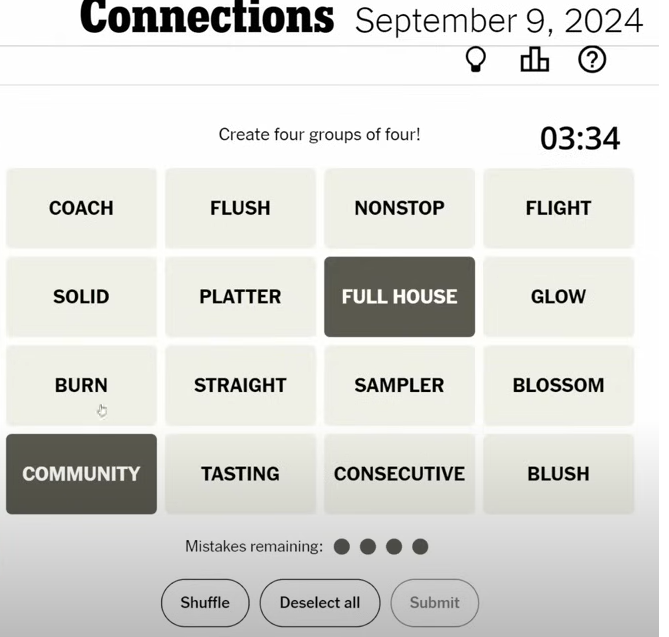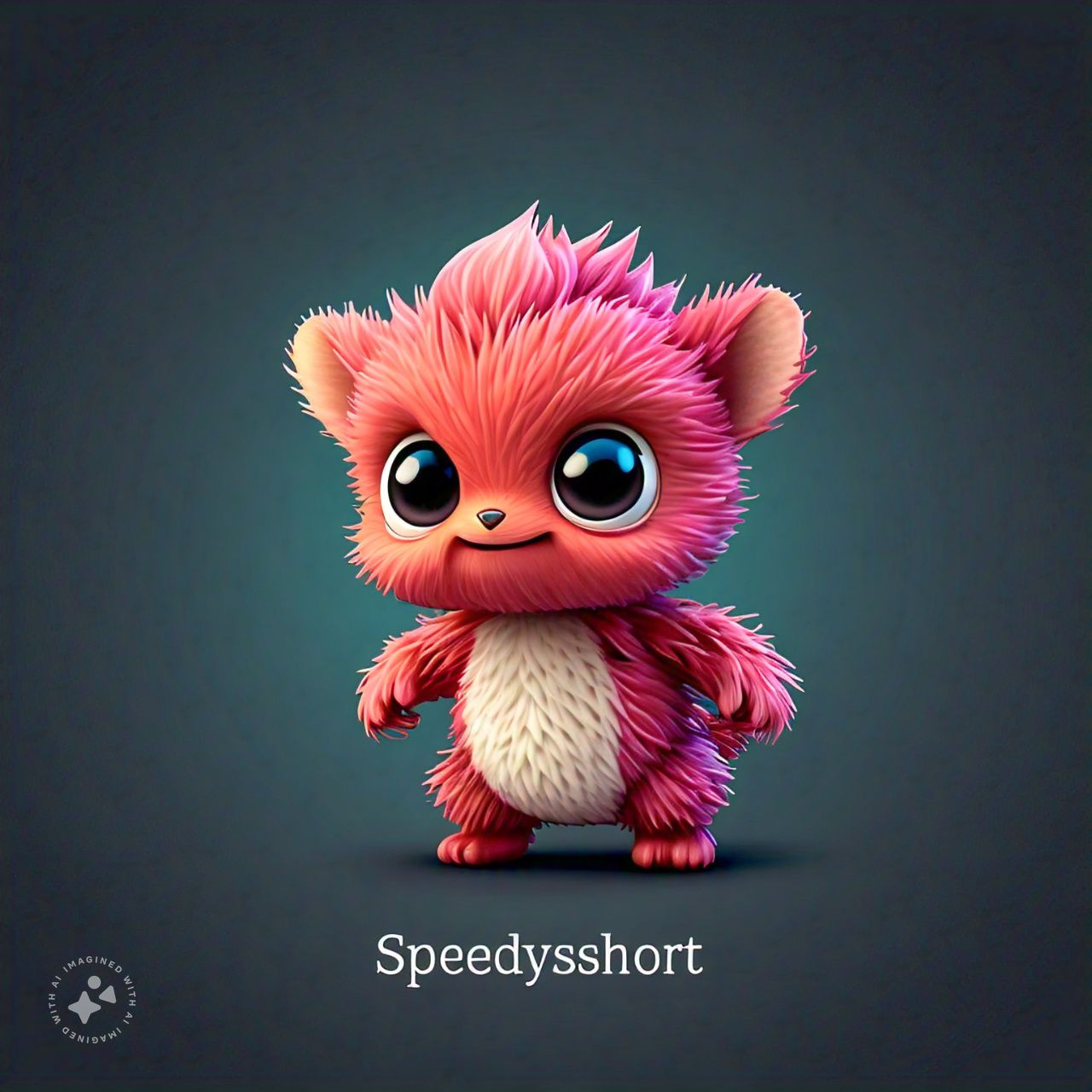The New York Times (NYT) has long been known for its academic games, yet NYT Connections is a game-transformer — in a true sense. Combining wordplay, design recognition, and consistent reasoning, Connections has quickly become one of the most popular puzzles on the web. Whether you’re a puzzle veteran or a newbie hoping to improve, we’ve got you covered for some tips, tricks and tidbits of information on how it works.
NYT Connections
NYT Connections is a word puzzle game that challenges players to connect words by looking for connections far away from them. It’s charmingly straightforward: you must group the words into groups of four in light of their common headings. However, don’t let its simplicity fool you—part of these connections are interesting! Similar to crosswords that depend on the connotations of individual words, NYT Connections asks that you think horizontally, often relying on unique connections or playful etymological nuances.
The game offers daily challenges, and each puzzle requires insight as well as innovation and persistence to solve. Players need to look for distractions – words that seem to belong with one group but fit in another – and monitor the limited guesses. Mastering NYT connections is all about improving your skills to quickly recognize design and cut through distractions.
Today’s NYT Connections Hints
On the off chance that you’re playing Current NYT Connections and feeling stuck, just relax — you’re in good company. Many players rely on small hints to get past particularly intense puzzles. In general, puzzles follow a specific pattern of classification:
- Synonyms: An explicit grouping, where all words share comparative connotations.
- Categories: These are often broader, with words related to a common theme (eg, colors, creatures, devices).
- Hidden Connections: Sometimes, the connection between words can be something dynamic or more subtle, such as when names of famous people all match or all start with the same letter.
- Outliers: Often, several words will feel completely separate from the rest of the puzzle, and these exceptions can be both a clue and a hindrance.
A viable approach is to start by looking for the most obvious matches. Collecting comparable sounding words or synonyms is a reasonable initial step to handling the game.
How the NYT’s Connections Game Took Over the Internet?
When NYT Connections was released, it was immediately hailed as a new interpretation of the traditional crossword puzzle. Its combination of challenge and accessibility has attracted a wide variety of puzzle lovers.Overall, how much has this simple yet clever game taken over the internet?
For starters, the NYT’s heritage in crosswords and word games, such as the Spelling Honey bee and the popular crossword, helped prepare. Connections took these ideas and gave them a modern twist, relying less on jargon and more on design recognition. In addition, its daily puzzle design guarantees that players usually have new expectations.
The online entertainment buzz surrounding the game likewise played a huge role in its viral success. Players often share their daily scores or ask teammates for help, making it a one-on-one encounter. It is something beyond a game; It’s an ice breaker, sparking conversations on Twitter, Reddit, and various stages of technique and approach.
Tips to Improve Your NYT Connections Game
NYT connections take time to master, but with practice and a few key tips, you can further develop your puzzle-solving skills:
- Start Broad: Start with clear connections. Often, words that stand out as characteristic of a reasonable class will help you narrow down more obscure words.
- Eliminate Distractions: Assuming you’re unsure of an association, skip it and highlight words that are easy to group. You’ll probably recognize an example that you’ve previously missed presenting with clear decisions.
- Think Outside the Box: Perhaps the hardest connections are the ones that don’t check out. For example, assuming you come across words that seem unrelated, consider them in different settings (eg, scholarly references, celebrities, or brand names).
- Use Your Guesses Wisely: Be sure to use experience, but remember that estimates are limited. Assuming you’re narrowing down the guesses, center around the connections you’re most sure of and save the harder guesses for last.
- Play Regularly: As with any skill, consistency is essential. The more you play, the more you will begin to understand common examples and work on your ability to think critically.
How Our New Game, Connections, Is Put Together?
Behind every successful game is a careful planning and testing process, and NYT Connections is no exception. As pointed out by the game’s creators, planning a decent puzzle involves finding some sort of balance between difficulty and fulfillment.
Each puzzle begins with a theme—in some cases a broad idea like “things that are blue” or “names of nations,” but more often with a few layers. The puzzles should also be challenging enough to challenge players, but not so difficult that they become frustrating. This fine balance is essential to keep players in the draw over many days.
The game also uses thorough testing. Before being released to the general population, each puzzle is tested by different solvers to guarantee that it is foolproof and fair. This guarantees that players of all skill levels can participate in the game.
How I Designed My Perfect Connections Solve?
As a carefully crafted NYT Connections player, I’ve found that the ideal solution is tied to speed and mindfulness. My cycle starts with simple things: I look for words that immediately appear to make clear connections. Sometimes, I discover synonyms or a group of words that have a similar ranking—those are my anchors.
Whenever I’ve separated a couple of connections, I deal with more annoying words. This is where experience becomes an essential factor. I’ll make speculative guesses given the advice, but be careful, because some implausible guesses can miss the whole puzzle.
The most wonderful aspect of solving NYT Connections is the “Aha!” is The second is when everything makes sense. This sense of accomplishment keeps returning to me.
Overall, NYT Connections is more than just a word game—it’s a psychological exercise, a conceptual test, and a source of daily joy for a large number of players. Using some of the tips and systems in this article, you can work on your game and fully immerse yourself in the fascinating universe of word puzzles.
Frequently Asked Questions About NYT Connections
1. What is NYT Connections?
NYT Connections is a daily word puzzle game presented by The New York Times. The game challenges players to match 16 words into four groups of four given distant connections or examples. These connections can range from synonyms and classes to extra theoretical connections.
2. How do you play NYT Connections?
To play NYT Connections, you must connect words in light of their connections. You’ll see a matrix of 16 words, and the goal is to separate the four clusters that the words are spaced with. Be careful – some words seem to fit into multiple combinations, which adds to the challenge. Players have a predetermined number of guesses, which makes it fundamental to consider each association.
3. What are some tips for solving NYT Connections?
- Start with the obvious: collecting words that seem to have a clear, common meaning or theme.
- Narrow down possibilities: Eliminate distractions by collecting simple words first.
- Think Creatively: Sometimes the connections between words are conceptual or require parallel reasoning.
- Use trial and error wisely: You have limited estimates, so choose carefully when estimating.
4. How can I improve at NYT Connections?
NYT connections improve with rehearsal, yet here are a few key takeaways:
Play continuously to find out about the connection types used in the game.
Look for examples such as synonyms, classifications, and conjunctions of situations.
Avoid overthinking. Now and again, the association can be more straightforward than it appears.
5. How often are new NYT Connections puzzles released?
NYT Connections is a daily puzzle game, so another puzzle is constantly delivered. Players can ask for new difficulties at regular intervals.
6. What happens if I can’t solve today’s NYT Connections puzzle?
On the off chance that you can’t solve the puzzle, you won’t be penalized, yet you can lose your streak (assuming you’ve been monitoring sequential achievements). Hints and walkthroughs are often accessible online to assume you’ve stopped by.
7. How is NYT Connections different from other NYT word games?
Not at all like crossword puzzles that rely heavily on words and definitions, NYT Connections centers around recognition of design and parallel reasoning. The game expects players to find connections between words that might not be obvious from the get-go. It offers a refreshing difference in pace from more traditional word puzzles such as Spelling Honey bee or crosswords.
8. Are there any strategies for tackling difficult puzzles?
Of course! Here are some systems for dealing with testing puzzles:
- Break the puzzle into sensible parts by zeroing in on the set of words that appear to be connected.
- In case you get stuck, come back with a bit more and a fresh perspective.
- Remember that a few words can squeeze into more than one classification, so think about all the possibilities before making a theory.
9. How do I access NYT Connections?
The NYT Connection can be accessed on their site through the New York Times Games segment. You may need a subscription to play, depending on your location or the stage you are using.
10. Is NYT Connections free to play?
Overall, you will need a subscription to The New York Times Games to access NYT Connections. Be that as it may, there may be limited-time or free adaptations accessible, especially for new players.
11. How are NYT Connections puzzles created?
Each NYT Connections puzzle is painstakingly planned by a group of puzzle makers. They expect to work out some sort of harmony between trouble and tomfoolery, checking to make sure the puzzles aren’t overly frustrating. The interaction includes thorough testing to guarantee reasonableness and feasibility.
12. How do I get better at identifying hidden connections?
Working on your ability to recognize distant connections takes time and practice. Dive deeper into different types of wordplay, and focus on broadening your overall knowledge in different categories (such as household names, social references, and regular articles). Additionally, focus on past puzzles to learn common examples used by game designers.








